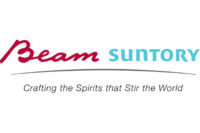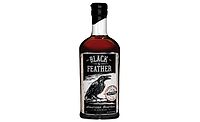Brown spirits are leading much of the growth in the U.S. spirits market, with the segment growing 3 percent in the first four months of 2014, according to New York-based Rabobank’s latest global spirits report. More specifically, sales of Tennessee whiskey and bourbon expanded their already large shares, while flavored whiskey, rye, small-batch whiskey, and Irish whiskey and single-malt Scotch whisky maintained their impressive growth rates, it reports.
In the overall spirits market, bank analysts point to trends of softening sales, particularly among vodkas, which grew 2.6 percent year-to-date, Rabobank says. The recent softness in the vodka category appears to be driven by slowing growth in the flavored vodka segment, which suggests the flavor trend might be reaching its peak, it explains.
However, using flavor is an avenue for category growth that many whiskey industry players are pursuing — especially American whiskeys. The whiskey segment grew 6.2 percent in the United States last year, and an estimated 45 percent of that growth was driven by flavored whiskies, Rabobank reports. Brand extensions such as Brown-Forman Corp.’s Jack Daniel’s Tennessee Honey, Beam Suntory Inc.’s Jim Beam Red Stag and Campari America’s Wild Turkey American Honey have enjoyed solid growth in recent years, but Sazerac Co.’s Fireball Cinnamon Whiskey continues to grab headlines by becoming a top-selling brand in just a few years.
However, not all spirits companies are eager to follow the flavor trend, Rabobank notes. The Scotch industry, in particular, has been reticent about experimenting with flavors, fearing flavor variations might undermine the prestige of their brands and the category as a whole, it says.
“Flavored line extensions present a dilemma for whiskey brand owners,” said Stephen Rannekleiv, senior wine and spirits analyst for Rabobank, in a statement. “American whiskey brands are having great success attracting new consumers by using sweeter, more approachable flavor variations; however, if not managed correctly, they could risk deteriorating the prestige of their brand in the long run, similar to what happened with the Blue Nun wine brand in the 1970s. Scotch players are currently avoiding that danger by not venturing into flavor variations, but the lack of innovation, which might draw new consumers, carries its own risks.”
Looking forward, the U.S. spirits market appears poised to continue growing at a moderate pace, though Rabobank predicts that the super-premium segment will outpace the industry as a whole. Among super-premium spirits, one segment to watch will be pot-stilled Irish whiskey, it says. Irish whiskey has shown impressive growth in recent years, and influential figures such as Jack McGarry of the Dead Rabbit Grocery and Grog in New York are promoting the virtues of traditional pot-still production, it notes.



